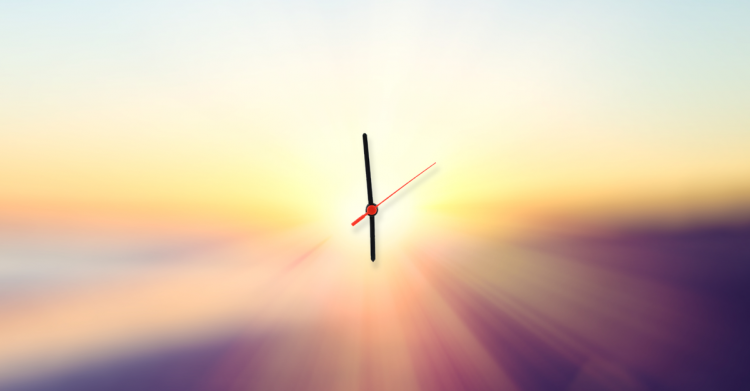This weekend, I’ll be waking up to one of my favorite days of the year: a government-sanctioned 25-hour Sunday. Forget birthdays, forget my anniversary; heck, forget the magic of Christmas. On Sunday, I’ll get to do a bit of time traveling as most of the United States transitions out of daylight saving time back into glorious, glorious standard time.
I may be a standard-time stan, but I’m no monster. I feel for the die-hard fans of DST. With the push of a button, or the turn of a dial, most Americans will be cleaving an hour of brightness out of their afternoons, at a time of year when days are already fast-dimming. Leaving work to a dusky sky is a bummer; a pre-dinner stroll cut short by darkness can really be the pits.
But if we all put aside our differences for just a moment, we can celebrate the fact that this weekend, nearly all Americans—regardless of where they sit on the DST love-hate spectrum—will be blessed with a 25-hour day, and that freaking rocks. If we must live in a dumb world where the dumb clocks shift twice a dumb year, let’s at least come together on the objective greatness of falling back.
I don’t want to minimize the nuisance of the time shift. Toggling back and forth twice a year is an absolute pain, and many Americans cheered when the Senate unanimously passed a proposal earlier this year to move the entire U.S. to permanent daylight saving time. But Katy Milkman, a behavioral scientist at the University of Pennsylvania and the host of the podcast Choiceology—who, by the way, loathes the end of DST—told me we can all reframe the autumn clock change “as a windfall.” Sunday will contain a freebie hour to do whatever we like. Rafael Pelayo, a sleep specialist at Stanford, will be spending his at the farmers’ market; Ken Carter, a psychologist and self-described morning person at Emory University, told me he might chill with an extra cup of coffee and his cats. I’m planning to split my minutes between a nap and Paper Girls (the graphic novel, not the show).
An hour isn’t enough time to learn a new language or cure cancer, or even to watch the entire season finale of The Rings of Power. But a little wiggle room could help kick-start a new habit, such as a gym routine, Milkman said, especially if you make a plan, tell a friend, and stick to it. Above all, she said, “do something to bring you joy.”
Falling back, to me, is its own joy: It recoups a springtime loss, and resets the clocks to the time that’s always suited me best. It’s wicked hard to fall asleep when the light lingers past 8 or 9 p.m. I also struggle to get out of bed without a hefty dose of morning light, which has been scarce in the past few weeks. Going out for my prework run has meant a lot of stumbling around and using my phone as a crummy flashlight. If and, God willing, when we ditch the status quo, I maintain that permanent standard time >>>> permanent daylight saving time. (So maybe it’s not terrible that the DST-forever bill is now stalled in the House.)
And I gotta say, the science (pushes glasses up nose) largely backs me and my fellow standardians up. Several organizations, including the American Academy of Sleep Medicine, have for years wanted to do away with DST for good. “Standard time is a more natural cycle,” Pelayo told me. “In nature we fall asleep to darkness and we wake up to light.” When people spend most of their year out of sync with these rhythms, “it reduces sleep duration and quality,” says Carleara Weiss, a behavioral-sleep-medicine expert at the University at Buffalo. The onset of DST has been linked to a bump in heart attacks and strokes, and Denise Rodriguez Esquivel, a psychologist at the University of Arizona College of Medicine, told me that our bodies may never fully adjust to DST. We’re just off-kilter for eight months.
For years, some researchers have argued that perma-DST would cut down on other societal woes: crime, traffic accidents, energy costs, even deer collisions. But research on the matter has produced mixed or contested results, showing that several of those benefits are modest or perhaps even nonexistent. And although sticking with DST might boost late-afternoon commerce, people might hate the shift more than they think. In the 1970s, the U.S. did a trial run of year-round DST … and it flopped. (Most of Arizona, where Rodriguez Esquivel lives, exists in permanent standard time; she told me it’s “really nice.”)
Returning to the proper state of things won’t be without its troubles. Next week will have its missed meetings, fumbled phone calls, and general grumpiness. Although springing forward is usually tougher, “fallback blues,” Weiss told me, are absolutely a thing. The change-up may be extra hard on parents of very young kids, overnight workers, and people who don’t have a safe place to sleep. “It’s a very confusing time for our brain,” Rodriguez Esquivel told me. “Just be kind to yourself.” That’s why I’ll be having two breakfasts on Sunday: one when my body says it’s time, and one when the clock does. Carter told me it doesn’t hurt to be extra accommodating of others, too. “I try to keep quiet this time of year,” he said. “It doesn’t annoy me very much. But I’m secretly amused by people like you.”
Realistically, many of us will just end up snoozing right through the bonus hour. Which is totally fine. I’m considering that plan, too. The only losers in that scenario will, alas, be my cats. They do not follow the clock changes, legislation be damned; a 25-hour day is to them a scourge if it means that I sleep in, and breakfast arrives a full hour late. In that event, they, unlike me, will eat when the clock decrees, and not a minute sooner.
Source by www.theatlantic.com











